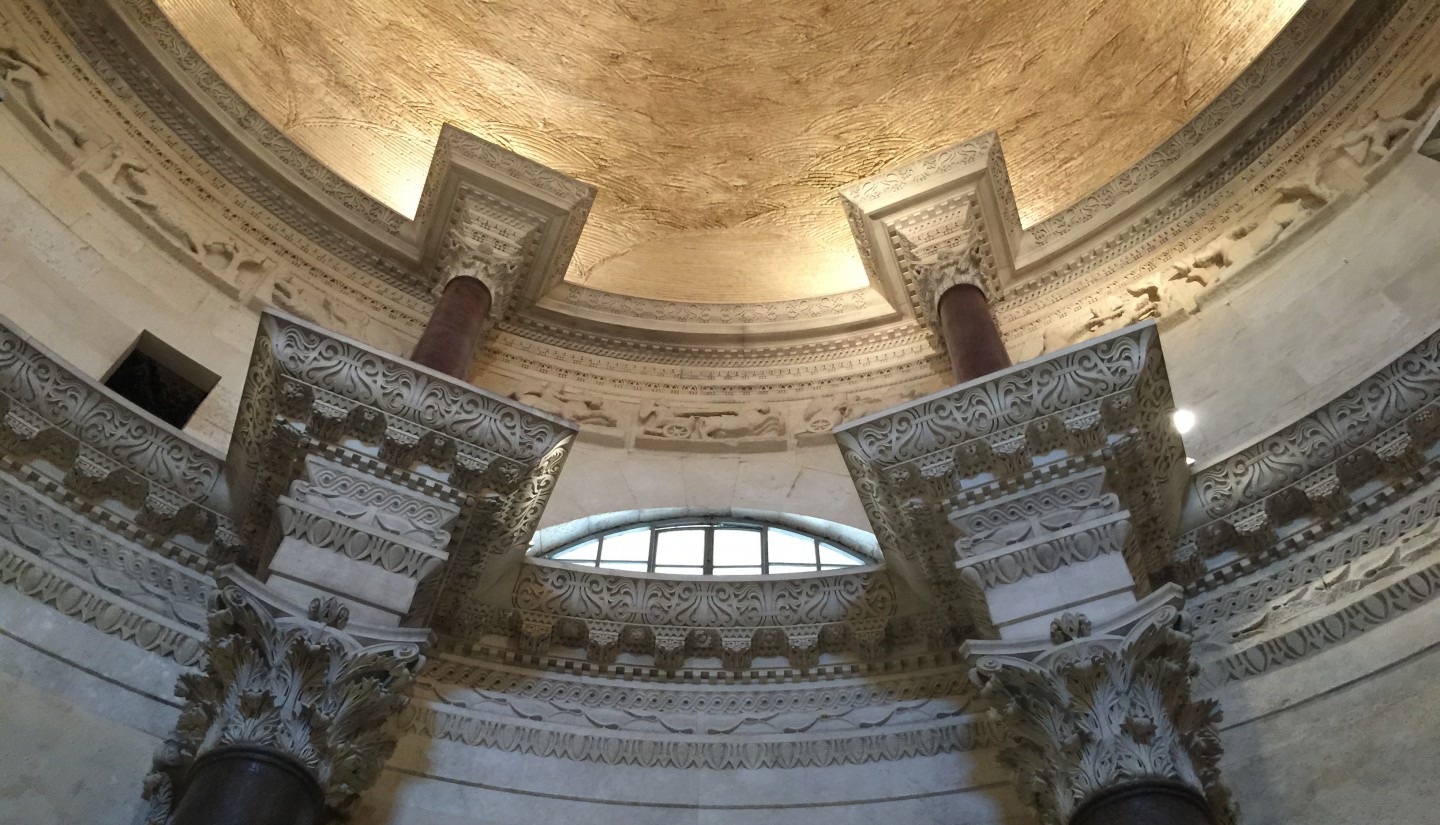Overall 4**** A lot to see: for Britannia, these are substantial visible remains
Display 3*** Museum brilliant and Cadw great at Baths (amphitheatre & barracks less so)
Access 4**** You can walk around whole site with Caerleon village; easy parking
Atmosphere 4**** Once you have walked around you can start to imagine the Fortress
Other 5***** Caerleon is very rare in Britannia, since the other Legionary Fortresses (Colchester, Gloucester, Exeter, Lincoln, Chester and York) are under modern cities and there is little of the Fortress to see at Wroxeter (and nothing at Inchtuthil)
Caerleon Legionary Fortress of Legio II Augusta consistes of:
- The Natatio and part of Frigidarium and Apodyterium of the internal Fortress Baths
- The exposed Ramparts on the South and West sides
- The Amphitheatre, just outside the South-West Gate
- The ‘only exposed legionary barrack block in the Empire (?)’
- The Legion Museum of the National Museum of Wales
Having failed to complete the conquest of the resident Iron Age tribe the Silures in South Wales in the AD50s, in AD75 Legio II Augusta moves from Exeter (Isca Dumnoniorum) to Caerleon (Isca) to complete the conquest. Unsurprisingly, the Romans have to quell determined military resistance.
The first fortress is constructed of timber with turf and earth ramparts. At a date quite soon after (probably around AD80) the whole fortress is rebuilt in stone, and a set of impressive fortress Baths are built in stone from the outset. By now, conditions for the occupiers are improving significantly .
In AD90 the Amphitheatre is begun and the fortress Baths receive their first refurbishment. Then, in AD122, most of Legio II Augusta moves north to build Hadrian’s Wall, but Caerleon remains operational.
In AD 130 the Baths receive a total reshape, including new changing rooms, and the pool is shortened.
In AD193 under Septimius Severus, despite an apparent rebuild of the Principia (HQ), Isca is abandoned or at least ‘mothballed’. This presumably reflects Legio II Augusta’s role campaigning in Scotland with the Emperor, with plans for permanent deployment in the North. (Severus had deployed legions in his new Province of Mesopotamia in AD197.)
In AD211 the plan to abandon Isca is dropped and under Emperor Caracalla major repairs are undertaken to the Fortress, Amphitheatre and Baths. Legio II Augusta gains the title Anoniniana – ‘Caracalla’s Own’.
By AD250 major components of the Legion have left as vexillations (detachments) to fight in the Anarchy of the C3rd, leaving large parts of the Fortress unoccupied.
There is some rebuilding of barracks in AD253-258 and around AD274.
Between AD287 and 296 the main buildings of the Fortress are demolished and Legio II Augusta is moved to Richborough, possibly by the military commander – then usurper – Carausius, in order to defend against Channel raiders and, thereafter, against the legitimate Empire.


















